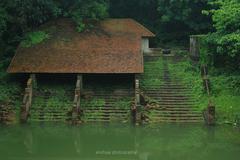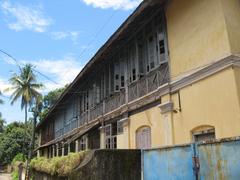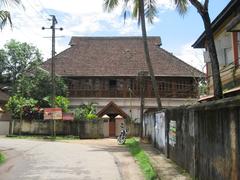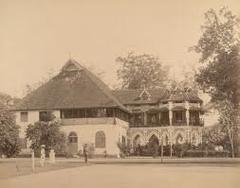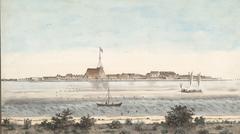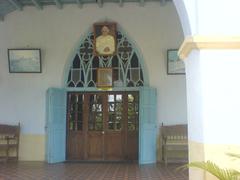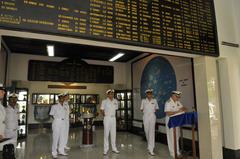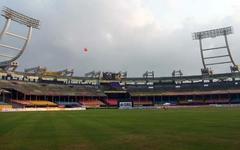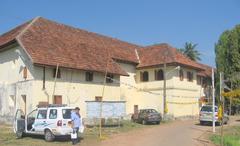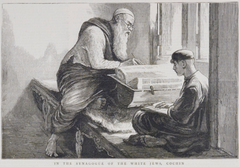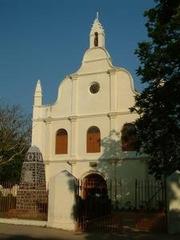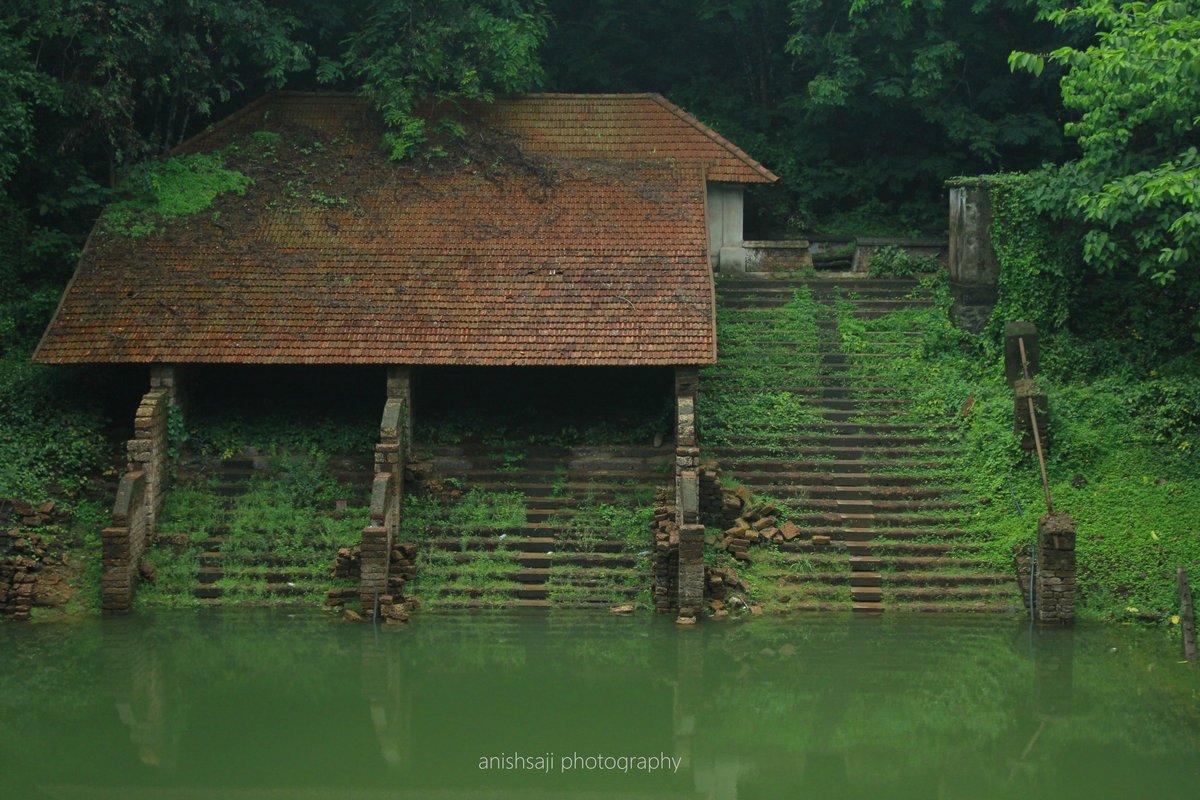
Hill Palace Complex Visiting Guide
Publication Date: 17/07/2024
Introduction to Hill Palace Complex
The Hill Palace Complex in Kochi, India, is a magnificent historical and cultural landmark that offers a unique window into Kerala’s royal heritage. Built in 1865 by Maharaja Rama Varma XV of Cochin, this sprawling 54-acre estate is not just an architectural marvel but also a repository of the region’s rich history and culture (Kerala Tourism). The complex, which originally served as the royal residence and administrative center for the Kingdom of Cochin, was later converted into a museum in 1986, making it accessible to the public and preserving its historical significance (The Hindu).
Visitors to the Hill Palace Complex can explore 49 buildings that showcase traditional Kerala architecture blended with colonial influences. The palace’s intricate wooden carvings, spacious courtyards, and sloping roofs are a testament to the region’s architectural prowess (Kerala Tourism). The museum houses a vast collection of artifacts, including royal regalia, paintings, manuscripts, and coins, offering a glimpse into the opulent lifestyle of the Cochin royal family. Additionally, the complex serves as an important center for archaeological and historical research, with its collections spanning from the Neolithic period to the Indus Valley Civilization (The Hindu).
For those planning a visit, the Hill Palace Complex is open daily from 9:00 AM to 5:00 PM, except on Mondays. Guided tours are available, providing deeper insights into the history and significance of this remarkable site. Whether you’re a history enthusiast, an architecture aficionado, or simply a curious traveler, the Hill Palace Complex offers an enriching and unforgettable experience.
Contents Overview
- Exploring Hill Palace Complex, Kochi
- History of Hill Palace Complex
- Origins and Construction
- Royal Residence and Administrative Center
- Architectural Significance
- Transition to a Museum
- Archaeological and Historical Research
- Preservation and Restoration Efforts
- Visitor Information
- Tickets and Visiting Hours
- Guided Tours and Travel Tips
- Nearby Attractions
- Cultural and Educational Significance
- Visitor Experience
- Notable Artifacts and Exhibits
- FAQ
Exploring Hill Palace Complex, Kochi
History of Hill Palace Complex
Origins and Construction
The Hill Palace Complex, located in Tripunithura, Kochi, Kerala, is a significant historical and cultural landmark. Constructed in 1865 by the Maharaja of Cochin, Rama Varma XV, as a royal residence, the palace was built on a sprawling 54-acre estate that includes 49 buildings in the traditional architectural style of Kerala, known as ‘nalukettu’ (Kerala Tourism).
Royal Residence and Administrative Center
The Hill Palace served as the official residence of the Cochin royal family and was also the administrative headquarters of the Kingdom of Cochin. The main palace building, known as the ‘Ettukettu,’ features eight halls and is a prime example of traditional Kerala architecture, characterized by its sloping roofs, wooden carvings, and spacious courtyards (The Hindu).
Architectural Significance
The Hill Palace Complex is renowned for its architectural grandeur and historical significance. The buildings showcase a blend of traditional Kerala architecture and colonial influences. The use of wood, intricate carvings, and spacious courtyards are hallmarks of the traditional style, while the incorporation of European elements reflects the colonial era’s impact on the region. The complex also includes a deer park, a horse stable, and a pond, adding to its historical and architectural charm (Kerala Tourism).
Transition to a Museum
In 1980, the Hill Palace Complex was handed over to the Government of Kerala, and in 1986, it was converted into a museum. The Hill Palace Museum was officially opened to the public on May 14, 1986, housing a vast collection of artifacts, including royal regalia, paintings, sculptures, manuscripts, and coins, offering visitors a glimpse into the rich history and cultural heritage of the Cochin royal family and the region (The Hindu).
Archaeological and Historical Research
The Hill Palace Museum also serves as a center for archaeological and historical research. Its collection includes artifacts from the Neolithic period and items from the Indus Valley Civilization, highlighting the region’s ancient history. The museum’s research wing conducts studies and excavations, contributing to the understanding of Kerala’s historical and cultural evolution (Kerala Tourism).
Preservation and Restoration Efforts
Significant efforts have been made to preserve and restore the Hill Palace Complex. The Archaeological Survey of India (ASI) and the Kerala State Department of Archaeology have undertaken various conservation projects to maintain the structural integrity and historical authenticity of the buildings, ensuring the Hill Palace remains a valuable cultural and historical asset for future generations (The Hindu).
Visitor Information
Tickets and Visiting Hours
Visitors can explore the Hill Palace Complex daily from 9:00 AM to 5:00 PM, except on Mondays when it is closed for maintenance. Tickets can be purchased at the entrance, with rates varying for adults, children, and foreign tourists. It is advisable to check the official Hill Palace website for updated ticket prices and any special events (Kerala Tourism).
Guided Tours and Travel Tips
Guided tours are available for visitors who wish to gain deeper insights into the history and significance of the complex. It is recommended to wear comfortable walking shoes and carry water, as exploring the expansive grounds can take several hours. Photography is allowed, but some areas may have restrictions.
Nearby Attractions
While in Tripunithura, visitors can also explore nearby attractions such as the Chottanikkara Temple, the Kerala Folklore Museum, and the Marine Drive in Kochi, making it a well-rounded cultural experience.
Cultural and Educational Significance
The Hill Palace Complex is not only a historical monument but also a center for cultural and educational activities. The museum regularly hosts exhibitions, workshops, and cultural programs, promoting the region’s rich heritage. Educational institutions often organize field trips to the museum, providing students with an opportunity to learn about Kerala’s history and culture firsthand (Kerala Tourism).
Visitor Experience
Visitors to the Hill Palace Complex can explore the various buildings and exhibits, gaining insight into the royal lifestyle and the region’s history. The museum’s collection includes a wide range of artifacts, such as the royal throne, ceremonial costumes, and ancient weapons. The palace grounds, with their lush gardens and scenic views, offer a tranquil setting for visitors to enjoy. Guided tours are available, providing detailed information about the history and significance of the complex (The Hindu).
Notable Artifacts and Exhibits
Some of the notable artifacts on display at the Hill Palace Museum include:
- The Royal Throne: Made of mahogany and adorned with gold and precious stones, the royal throne is a symbol of the Cochin royal family’s power and prestige.
- Ceremonial Costumes: The museum houses a collection of ceremonial costumes worn by the royal family, showcasing the intricate craftsmanship and traditional designs of Kerala.
- Ancient Weapons: The museum’s collection of ancient weapons includes swords, spears, and shields, providing insight into the martial traditions of the region.
- Manuscripts and Coins: The museum’s collection of manuscripts and coins offers a glimpse into the region’s literary and economic history (Kerala Tourism).
FAQ
What are the visiting hours for Hill Palace Complex?
The Hill Palace Complex is open daily from 9:00 AM to 5:00 PM, except on Mondays.
How much are tickets to Hill Palace Complex?
Ticket prices vary for adults, children, and foreign tourists. It is best to check the official Hill Palace website for current rates.
Are guided tours available at Hill Palace Complex?
Yes, guided tours are available and recommended for a comprehensive experience.
Conclusion
The Hill Palace Complex in Kochi is a testament to the rich history and cultural heritage of Kerala. Its transformation from a royal residence to a museum has preserved its historical significance and made it accessible to the public. Visitors to the Hill Palace can immerse themselves in the region’s history, architecture, and culture, making it a must-visit destination for anyone interested in Kerala’s heritage (The Hindu).
Call to Action
For more information on the Hill Palace Complex and other historical sites in Kerala, download the Audiala mobile app, check out related posts, or follow us on social media for updates.
Summary of Hill Palace Complex
The Hill Palace Complex in Kochi stands as a monumental testament to Kerala’s rich history, architectural grandeur, and cultural heritage. Its transformation from a royal residence to a public museum has ensured that the legacy of the Cochin Maharajas is preserved for future generations to appreciate. Visitors to the Hill Palace are treated to an array of fascinating exhibits, from royal thrones and ceremonial costumes to ancient manuscripts and weapons, each offering a unique insight into the region’s past (Kerala Tourism).
The complex’s ethno-archaeological museum, deer park, and herbal garden add further layers of interest, making it a comprehensive cultural destination. As a filming location for numerous Malayalam movies, the Hill Palace Complex also enjoys a special place in contemporary popular culture (The Hindu).
For an enriching experience, visitors are encouraged to take guided tours, explore nearby attractions like the Chottanikkara Temple and the Kerala Folklore Museum, and participate in the various cultural programs hosted by the museum. By following the travel tips and guidelines provided, you can ensure a smooth and enjoyable visit while gaining a deeper appreciation for this historical gem. Plan your visit to the Hill Palace Complex today and immerse yourself in the grandeur and history of Kerala (Kerala Tourism).
Sources and Further Reading
- Kerala Tourism, 2024. Kerala Tourism
- The Hindu, 2024. The Hindu
